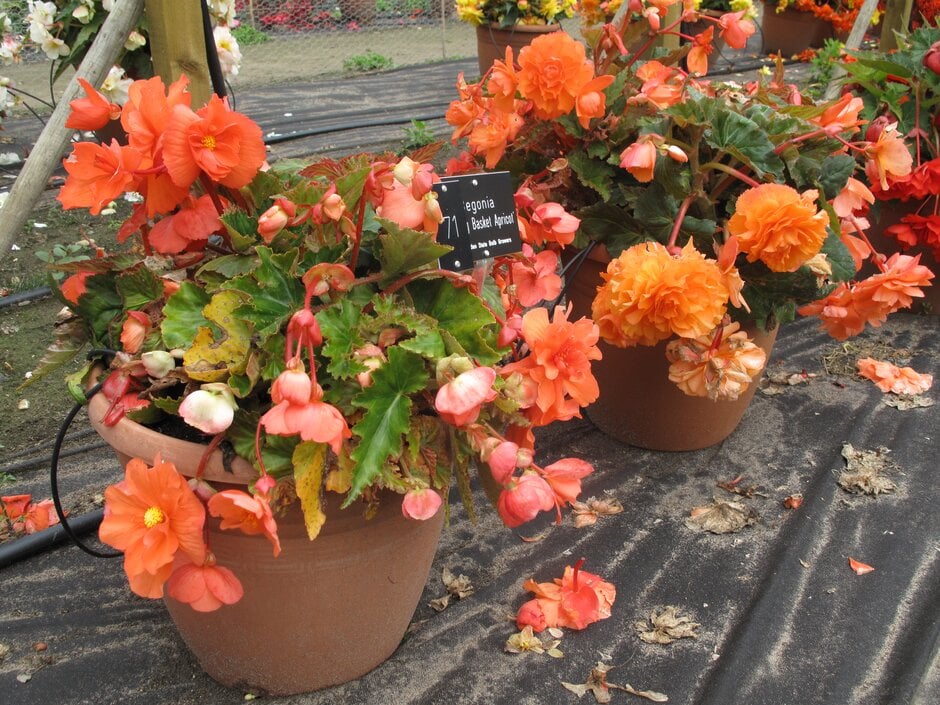Begonia 'Hanging Basket Apricot'
begonia 'Hanging Basket Apricot'
A tender, tuberous, trailing perennial with narrow, pointed bright green leaves with jagged edges. Large, fully-double, pale pink to apricot flowers around 5-12cm across, are produced from late spring until the first frosts.

Size
Ultimate height
0.1–0.5 metresTime to ultimate height
1 yearUltimate spread
0.5–1 metresGrowing conditions
Moisture
Moist but well–drainedpH
NeutralColour & scent
| Stem | Flower | Foliage | Fruit | |
| Spring | Orange Pink | Green | ||
|---|---|---|---|---|
| Summer | Orange Pink | Green | ||
| Autumn | Orange Pink | Green | ||
| Winter |
Position
- Full sun
- Partial shade
Aspect
East–facing or North–facing or South–facing or West–facing
Exposure
Sheltered Hardiness
H1BBotanical details
- Family
- Begoniaceae
- Native to GB / Ireland
- No
- Foliage
- Deciduous
- Habit
- Trailing
- Potentially harmful
- Ornamental bulbs - not to be eaten. Wear gloves and other protective equipment when handling. Pets: Ornamental bulbs - not to be eaten - see the HTA guide to potentially harmful plants for further information and useful contact numbers
- Genus
Begonia can be annuals, evergreen or deciduous perennials or shrubs, with fibrous, tuberous or rhizomatous roots and usually asymmetrical leaves, often strikingly patterned, and small or large flowers, both male and female in the same cluster
- Name status
Unresolved
How to grow
Cultivation
Place tubers, hollow-side up, on top of well-drained soil in shallow containers in a light potting mix around 2-4" apart, handling tubers with care as they are very fragile. Place in a bright location, away from direct sunlight. Tubers should show growth between 2 and 6 weeks after planting. Tubers can be transplanted after the first 2 leaves have grown and planted out with the risk of frost has passed. Plants can be overwintered then re-planted the following spring. See begonias: outdoors for further advice
Propagation
Propagate by division or stem cuttings in the spring
Suggested planting locations and garden types
- City and courtyard gardens
- Cottage and informal garden
- hanging basket
- Patio and container plants
- Conservatory and greenhouse
Pruning
Remove old stems and foliage as the plant dies back for winter
Pests
May be susceptible to caterpillars, mealybugs, thrips, glasshouse red spider mite, vine weevil and aphids
Diseases
May be susceptible to grey moulds, powdery mildews, stem rot and rhizome rot
Get involved
The Royal Horticultural Society is the UK’s leading gardening charity. We aim to enrich everyone’s life through plants, and make the UK a greener and more beautiful place.